Uncover Bordeaux's vibrant flavors and culinary gems with our expert guides. Plan an unforgettable trip now!
Read more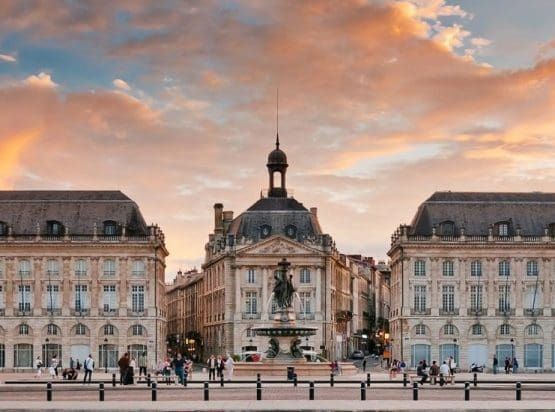
EXPLORE ALL OUR BORDEAUX WINE REGIONS GUIDE
Last updated: April 4, 2025
Thirty-five years ago, few critics had anything positive to say about the vineyards of Blaye. Its mediocre output became the mainstay of négociants’ generic Bordeaux: uninspiring wines sold to supermarkets needing profitable plonk. It was a vicious circle; the wines would not improve without significant investment, yet there was no motivation to raise standards as the price bar had been set so low. Thus, while up-and-coming zones like Lalande-de-Pomerol started to make a name for themselves, Blaye remained in the shadows.
However, it all looks very different today. Paradoxically, the shrinking market for cheap wine and increasing financial burdens placed on growers have been positive for quality, necessitating a renewed emphasis on lower yields, better winemaking, and the vital injection of capital investment. The proof is in the eating: Blaye now makes exceptional red, white, and rosé wines at very attractive prices. It is about time consumers discovered them.
Discover More About French Wine
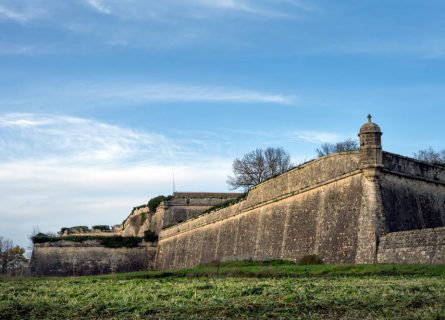
The Romans were the first to take advantage of Blaye’s superior soils and climate, planting vines on the Blaye plateau in the last century BC after Caesar’s armies conquered Gaul. In Latin winemaking, a style now considered abhorrent in 2024, winemakers favored storing wines in clay amphorae, heating them over flames, and maderizing the contents.
They then adulterated these wines with vast quantities of sugar, herbs, and occasionally seawater. Yet, to the Roman upper classes, this was the nectar of the gods! Indeed, even in the ancient era, Bordeaux’s vineyards were a lucrative investment, with their wines shipped to towns and cities across the Western Roman Empire.
However, the collapse of Rome’s authority in the 5th century and the arrival of the Visigoths saw winegrowing largely abandoned in Gaul; a revival did not occur until the second millennium. The catalyst for this resurgence was political in nature: Henry II married Eleanor of Aquitaine in 1155, and so the expanding ports of Bordeaux and Libourne became sovereign territories of the English crown.
As a committed oenophile, Henry of Anjou happily granted privileges to the vineyards of Blaye and Graves, giving them a massive head start in international markets. Meanwhile, he placed other regions in southwest France at the back of the queue! Meanwhile, the area under vine in Bordeaux expanded significantly in the 1300s to meet the burgeoning demand from northern Europe.
Shift in Bordeaux’s Trade Dynamics
Unfortunately, the loss of Aquitaine after the battle of Castillon in 1453 was a major setback for the merchants of Bordeaux, as imports declined off the back of ongoing tensions between France and England. Nevertheless, the French had no interest in stifling a profitable trade; Dutch, Irish, and German investors flocked to Bordeaux after England’s commercial influence waned.
Viticultural Expansion and Challenges
Bordeaux’s viticultural expansion continued into the mid-1700s after Dutch engineers drained the salt marshes of the Medoc Peninsula. Yet, in the post-phylloxera environment of the early 20th century, Blaye floundered. International attention focused on the Medoc and Saint-Emilion/Pomerol wines, forcing Bordeaux’s less prestigious zones to cut corners to survive.
Productive clones yielded generous crops of barely ripe grapes with coarse tannins and a distinct lack of upfront fruit. Meanwhile, producers used much of the area’s white wine to make Cognac in nearby Charente.
Quality Improvement and New Appellations
Nevertheless, quality began to improve in the early 21st century, and in 2000, a new appellation was created: Blaye. This superior designation imposes stricter rules concerning planting density, minimum alcohol level, and yield.
Additionally, the new appellation Blaye: Côtes de Bordeaux was introduced in 2009, replacing Premières Côtes de Blaye. The little-adopted Côtes de Blaye label is reserved exclusively for the production of white wines. Trust the French bureaucrats, as ever, to complicate things!
The vineyards of Blaye cover more than 5000 hectares of high-potential land to the east of the Gironde estuary. During medieval times, these vineyards generated significant wealth, as regions like the Medoc were still undeveloped, and there was easy access to northern Europe. Of course, the great appellations of Margaux and Pauillac have since overtaken Blaye in both fame and fortune.
However, some excellent wines are now being made here, notwithstanding a rocky patch! The area under vine extends east from the port of Blaye to the pretty village of St-Christoly-de Blaye, spreading north and south from its boundaries. Moreover, unlike the uninspiring flat landscape of the Medoc, Blaye is a very green and undulating region, with variances in elevation and aspect keenly exploited by the zone’s talented winegrowers.
Shift in Grape Varieties
Historically, Blaye was used as a ‘white wine factory,’ producing large volumes of Colombard and Ugni Blanc that were shipped to Charentes for distillation into Cognac. But Merlot is now the key grape variety of Blaye, accounting for over 65 percent of the total surface area, followed by Cabernet Sauvignon, Cabernet Franc, and Malbec. Blaye also has a small amount of Petit Verdot and Carmenere, with the latter variety being unwelcome and almost despised in the vineyards across the estuary.
Meanwhile, the acreage dedicated to Sauvignon Blanc increases yearly, as the market for affordable Bordeaux Blanc is extremely buoyant in Europe, the US, and emerging Asian markets. This versatile grape is typically blended with a smaller amount of Muscadelle and/or Semillon in addition to Colombard. Today’s most important communes are Blaye, Plassac, St-Paul, Marcilla, Reignac, St-Ciers and St-Palais.
Diverse Soil Types and Terroir
Much like Saint-Emilion and Bourg, there is a wealth of clay-limestone in the soils of Blaye, which suits both Sauvignon Blanc and Merlot down to the ground. Yet the terroir varies: the northern sectors of the zone have more gravel, leading to more planting of Cabernet Sauvignon, which thrives in warmer soils. Generally, the vineyards surrounding Blaye tend to ripen first – and have much less risk of frost damage – while vines around the village of St-Ciers to the north ripen later than other areas. Around the commune of St-Savin, you’ll find sandier soils that yield soft, fruity red wines for immediate consumption.
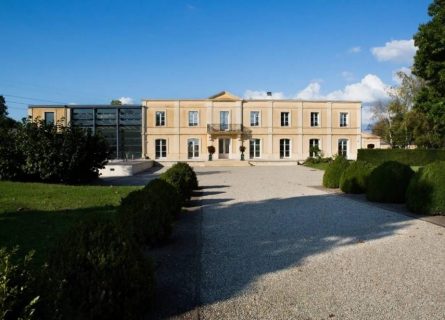
In this sizable region, the vignerons of Blaye produce wines of all three colors, including some of Bordeaux’s best-value rosé. Yet the various appellations within the region can lead to confusion. So it’s important to remember that the most important designation, in terms of volume at least, is Blaye: Côtes de Bordeaux.
Indeed, most wines will reference that appellation on the front label; reds are a blend of any of the following: Merlot, Malbec, Cabernet Sauvignon, and Cabernet Franc. Meanwhile, the best whites will typically contain at least 60-70 percent Sauvignon Blanc, a variety that thrives on the cool limestone soils of lower Blaye.
White Wines
In addition, the little-used Côtes de Blaye title will occasionally make an appearance – this is for white wines only and will often incorporate Colombard and Ugni Blanc. The long-standing Blaye AOC has not been abandoned yet; however, its significance has diminished as growers have embraced the Côtes de Bordeaux framework. Unfortunately, rosé wines are only eligible for the generic, pan-regional Bordeaux AOC. Still, it does not seem to have hurt sales!
Modernization
As elsewhere, sustained investment has had a lasting impact on the quality of Blaye wines: modern equipment and new barrels are now familiar sights at all the leading properties. Château Bel-Air La Royère exemplifies this renewed emphasis on quality, using hand-harvested grapes to produce its excellent Grand Vin Rouge. After vinification in cement and stainless steel tanks, the wine is aged for at least 16 months in around 70-80% new wood. The resulting wines are rich and structured, with a distinct spiciness, good freshness, and firm tannins.
Château Bertinerie
However, if your preferences lean more towards Bordeaux Blanc, you must try the brilliant (and incredible value) whites of Château Bertinerie. The estate’s signature white cuvée, Haut-Bertinerie, is based on a select parcel of very old Sauvignon Blanc vines, cropped at no more than 42 hectoliters per hectare.
Producers ferment hand-harvested berries in about 80% new French barriques and regularly perform Bâtonnage (lees stirring) for 11 months. What emerges in your glass is an aromatic, elegant white of immense weight and complexity, with ample fruit, a waxy texture, and a long finish. Wines such as Haut-Bertinerie Blanc have put Blaye on the international map. Particularly as they can rival Pessac-Leognan in quality but never in price.
At first glance, there is nothing to tempt – or excite – the seasoned oenophile in the hills of Blaye. The region has undergone a revolutionary change in quality and winemaking in the 21st century, a statement that applies to many appellations in Bordeaux as well. The zone’s winemakers are marketing delicious red and white blends, led by Merlot and Sauvignon Blanc, that offer tremendous value for money; so too are producers in Bourg, Graves, Fronsac, and Entre Deux Mers.
This is the biggest irony about the resurgence of ‘minor’ Bordeaux—the continued rise in quality makes it harder for individual chateau and regions to stand out. And, unlike Pauillac and Saint-Emilion, there is no established classification framework to fall back on.
Unique Attributes
Yet Blaye does have one or two unique attributes. Wine geeks may find it interesting to learn that in Blaye, Côt (the local synonym for Malbec) is considered a noble red variety, a view not widely shared elsewhere in Bordeaux.
However, this bias deserves to be challenged, as Malbec can produce impressive results outside of Argentina if the soils and winemaking meet the required standards. Château Bel-Air La Royère and Château Bellevue-Gazin use about 20-25 percent Malbec in their Grand Vin. This variety contributes perfume, vigor, and a certain exotic quality to the best reds of Blaye.
2016 Vintage
The superlative 2016 vintage saw certain winemakers include up to 35% Malbec in their red blends, as at Château Bel-Air La Royère. It forms a very harmonious partnership with Merlot – the former brings spice and richness, and the latter offers supple, plummy fruit and opulence. Hell, winegrowers in Blaye have made Colombard sing, a grape variety almost universally regarded as subpar.
But it yields highly aromatic and fruity wines in the calcareous soils of Blaye: wines with an immediate charm and drinkability. Granted, they cannot rival the longevity of Sauvignon Blanc and Semillon; however, that scarcely matters in an impatient world.
Indeed, very few destinations in Bordeaux manage to coax such finesse out of Malbec and such vibrant aromatics out of Colombard. Nevertheless, Blaye is one of them. For that reason alone, this dynamic region is worthy of our attention and respect.
Colombard is a white wine grape varietal, most famously known for its use in the production of Cognac and Armagnac.
Find out moreExplore the allure of the Semillon grape & its legendary connection to Sauternes. Unveil the history & flavors of this captivating varietal. Cheers!
Find out moreThe sauvignon blanc grape varietal, originally from the Bordeaux region of France, is now one of the world's most loved white varieties.
Find out moreSauvignon Gris is a pink-berried mutation of Sauvignon Blanc, originally likely from Bordeaux but now also prominent in Chile. It is a relatively obscure grape, making up only 2% of Bordeaux's white wine grape production. Nearly extinct due to the phylloxera epidemic, its revival is credited to Jacky Preys, a winemaker from the Loire Valley.
Muscadelle is a white grape varietal, primarily used for blending in the production of sweet white wines in the Bordeaux region.
Find out moreDiscover the irresistible allure of Cabernet Sauvignon—a worldwide favorite with robust, dark-bodied flavor. Unleash your wine journey today!
Find out moreCarménère is a red wine grape from Bordeaux, France, once used for blending but is now mostly grown in Chile. Named for its crimson leaves in autumn, it's part of the Cabernet family and was one of Bordeaux's original six red grapes. Although rare in France today, Chile leads with the largest Carménère vineyards, exploring its blending potential, notably with Cabernet Sauvignon. The grape is also cultivated in Italy, Argentina, and parts of the United States.
Merlot is the most cultivated grape in Bordeaux and closely related to Cabernet Franc
Find out moreCabernet Franc grape is a close relative of Merlot and Cabernet Sauvignon and is the principal blending grape used in Bordeaux.
Find out moreDelve into Malbec, a dark, small grape native to France, cherished for its thick skin and exceptional flavors. 🍇🍷
Find out morePetit Verdot is a full-bodied red wine grape varietal used in classic Bordeaux blends and originates in southwestern France
Find out moreThe restaurants of Blaye are unlikely to attract the attention of globally renowned chefs or the jet-setting glitterati. Nevertheless, there is much to recommend in the wholesome, seasonal cooking of the Gironde; fresh from the estuary – and ocean – seafood proliferates on menus, of course, in addition to milk-fed lamb, foie gras, and confit du canard.
A Gastronomic Guide to the Cuisine of Bordeaux: Read more

Uncover Bordeaux's vibrant flavors and culinary gems with our expert guides. Plan an unforgettable trip now!
Read more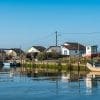
Uncover Arcachon vibrant flavors and culinary gems with our expert guides. Plan an unforgettable trip now!
Read more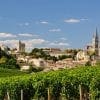
Uncover Saint Emilion's vibrant flavors and culinary gems with our expert guides. Plan an unforgettable trip now!
Read moreIf you would like us to customize an exclusive luxury tour, contact us and let us know your travel plans. We offer luxury food and wine tours for private groups of a mininium two guests. In addition, all of our private, chauffeured tours are available year-round upon request.

